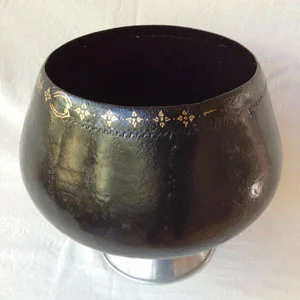So what are the hallmarks of mahamudra meditation? And their causes?
In centuries past, emperors sealed their commands with signet rings and wax. It represented the final word as it were and thus the kingdom was ruled. Relatively speaking, each person could be considered a sovereign entity unto themselves, begging then the question, what’s the final word or definitive seal for “me?” Or more accurately, for our state of consciousness or being?
“Maha” means “great” and “mudra” means “movement” and also “seal” in Sanskrit: the great movement refers to the play of the mind/body experience we call life. But as every dancer knows, in every movement there is a still point, a center, from which the dance sources both its focus and energy. In a sense this still point is a seal – the command center – from which the universe and each of us turns. Together, movement and stillness rule the “kingdoms” of our lives.
As a form of meditation, mahamudra practice involves studying the still mind and the moving mind. In the process we learn to balance the receptive with the active, the inner with the outer, the unstirring and the engaged.
St. Matthew said, “If thine eye be single then thy whole body shall be filled with light.” So too, in mahamudra practice: when we bring the two sides together our being is filled with light. And where there is light, there is clarity. With clarity comes compassion, and with compassion follows understanding.
All of these are blissful experiences we then bring to our daily lives, in all its aspects: work, relationships, play, finances, nourishment, rest and so on.
So what are the hallmarks of mahamudra meditation? And their causes?
- Open spaciousness of mind: a result of the “noise” slowly quieting down.
- Bright clarity and focus of mind: a result of the emotional calming that mahamudra fosters.
- Enhanced joy and bliss: a result of witnessing the unceasing “playfulness” of our minds.
- A sense of peace and contentment: a result of recognizing that all the “stories” we tell ourselves aren’t so dire after all.
Mahamudra masters have compared the events of our body/mind to a rainbow, a mirage, a dream, a dewdrop in the sun and the like. These events – thoughts, feelings and sensations – seem so real because they are habitual and repetitive. Moreover, we cling to the ones we like and run from the ones we don’t. Mahamudra lets us see them for what they are: “the play of the mind.”
As children naturally recognize, the only difference between play and work is our attitude. Mahamudra is a delightful kind of play that’s of tremendous help with our work.
Doug Duncan and Catherine Pawasarat will be leading a retreat on Mahamudra (Fri., Dec. 18, 2015 – Fri., Jan. 1, 2016) at Clear Sky retreat center. See the Mahamudra retreat description for more details.




